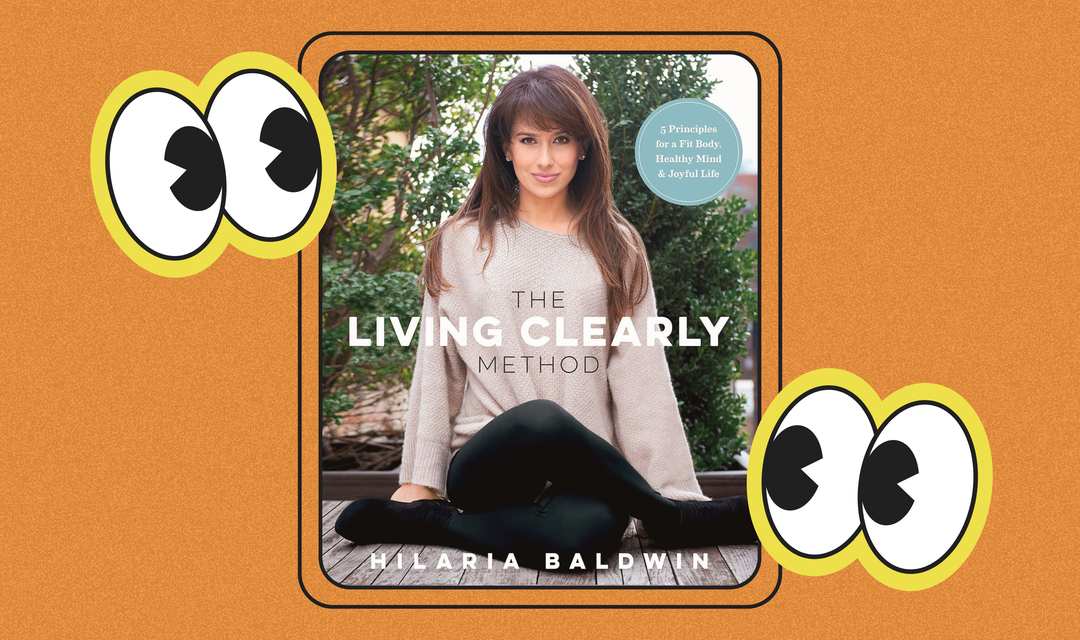Other than that, standouts included the line: “Being deaf to my body’s wisdom was like driving down a mountain road with a dirty windshield and no GPS,” (page 14), which is a mental image that really tickled me, and her desire to “whack” a woman with an empty baby stroller who was being argumentative with her (page 35). All in all? I wish I could take her yoga class. She seems fun! She also said “our not-so-smart phones” on page 75. I love stuff like that from corporate-approved wellness types. That’s what I want.
So, despite some very distracting acrobatics, I don’t have much to say about Hilaria Baldwin. But the genre in which this book is situated—a soft, cooing category of literature exemplified in The Living Clearly Method’s cover, a woman with bangs in a cashmere sweater (implied acai bowl offscreen)—is where the interesting stuff is. This figure—part yoga instructor, part Goop apostle, part CEO—represents a sort of cleric caste in contemporary life, tasked with taming the many demons of modernity for her flock, but also with rising to the top of the structure that generates such evils as work emails, corn syrup, long commutes, and impossible beauty standards.
Within the pages of these books, life under capitalism for the professional class is rendered as a sort of soft magic system. Feeling stuck in your job? Frustrated that you can’t seem to kick your tendency for tardiness? Cracking under the stress of balancing your family with your career? All those problems and their attendant emotions are stored somewhere in the body, where you can target and challenge them on the mat.
To be clear, I do this! So I’m certainly not judging anyone for it. I love overpaying for a yoga class and moving around in a guided practice, and I enjoy it when my instructor tells me to breathe in, breathe out, and let go—even if I’m not a huge fan of when they get a bit carried away and have me start, I don’t know, asking my sacrum for forgiveness.
Still, I think this position is an interesting by-product of the kind of civilization we’ve built—our attention spans under constant siege by our technology, work life continuing its encroach into private life, and precious spaces for pause becoming scarcer and scarcer. One temporary solution to all this harsh hustle is a soft, gentle industry—soothing colors, incense, stretches, and a calming voice reeling your beleaguered brain back into your body so that you can get back to the grind. All for a fee, of course.
It’s also worth noting that this book was written in a different world (2015) than it was released in (2016), and the ensuing national calamity really highlighted how ill-equipped the wellness industry was to handle the unrest and tribulations that were yet to come, issues that continue to color our daily lives. Perhaps this book would have sold better in the former world, when celebrity and yoga had even more power, or at least a less complicated influence. It makes me wonder how figures like Hilaria will adapt, or if we will continue to try to deep-breathe our way through apocalypse after apocalypse.
As for a broader, better solution, well, there aren’t any easy answers—unless, of course, you can manifest an A-list celebrity husband by asking the universe in a restaurant. In which case, that is the answer. Do that.
Namaste.
Related:

